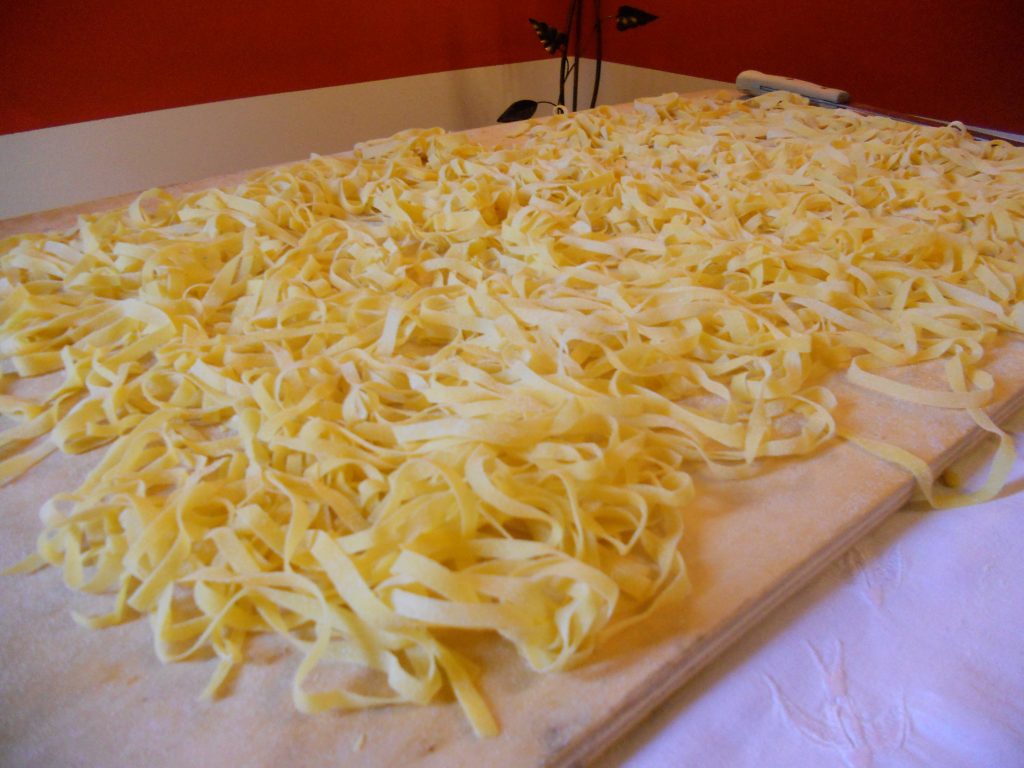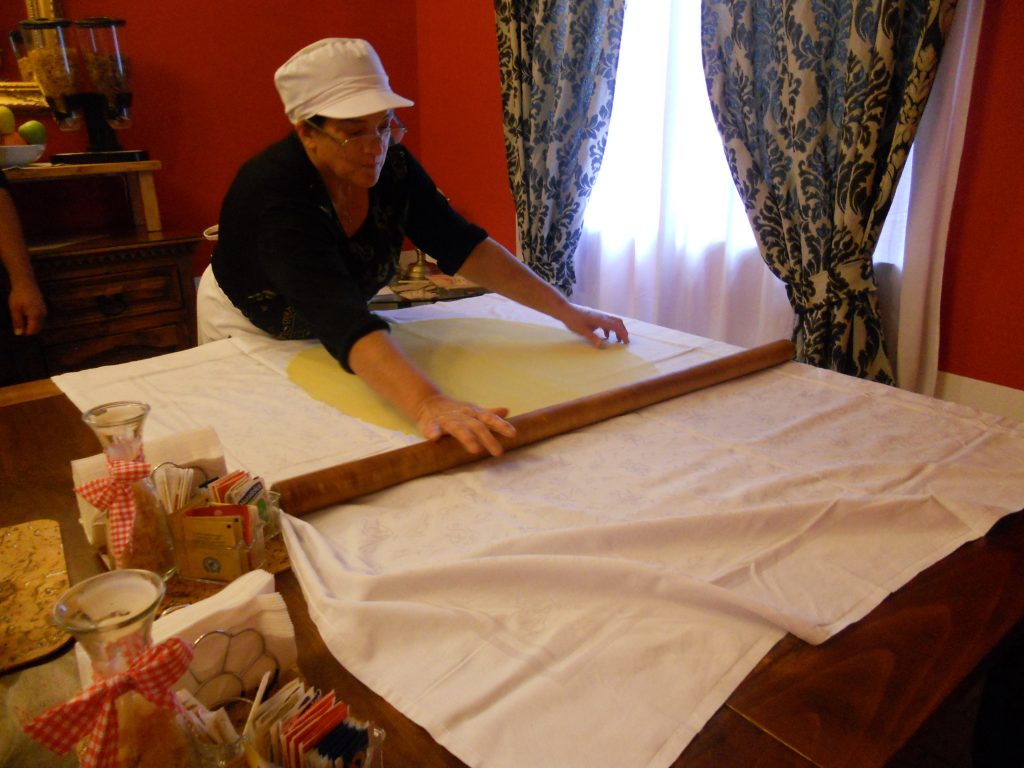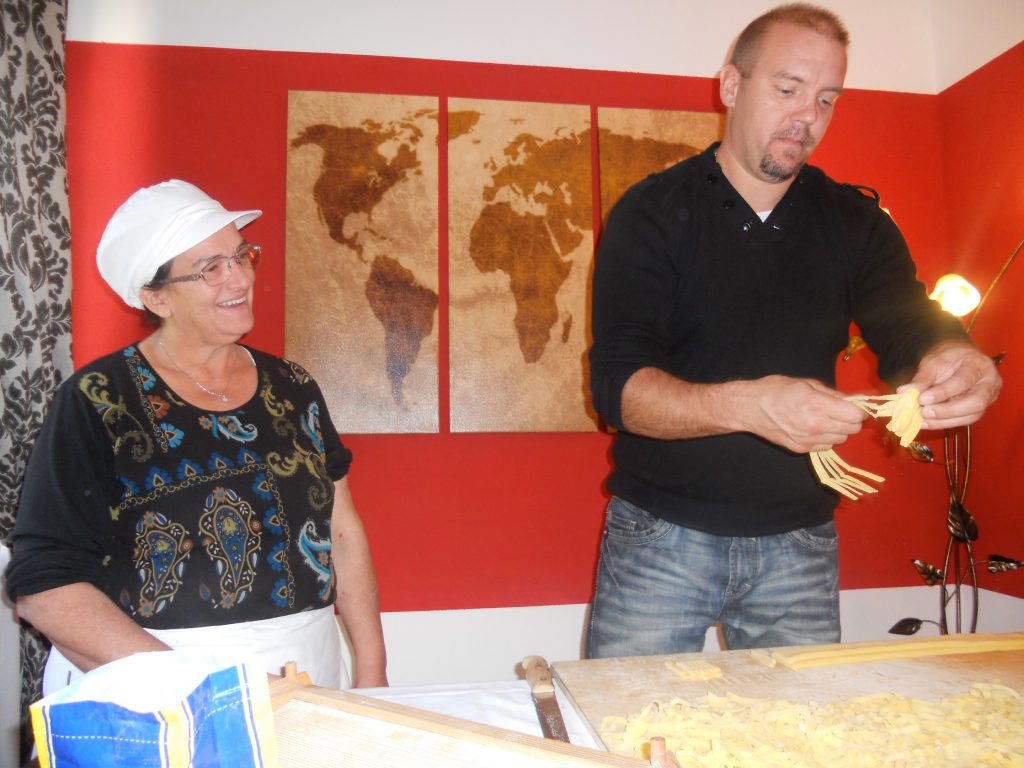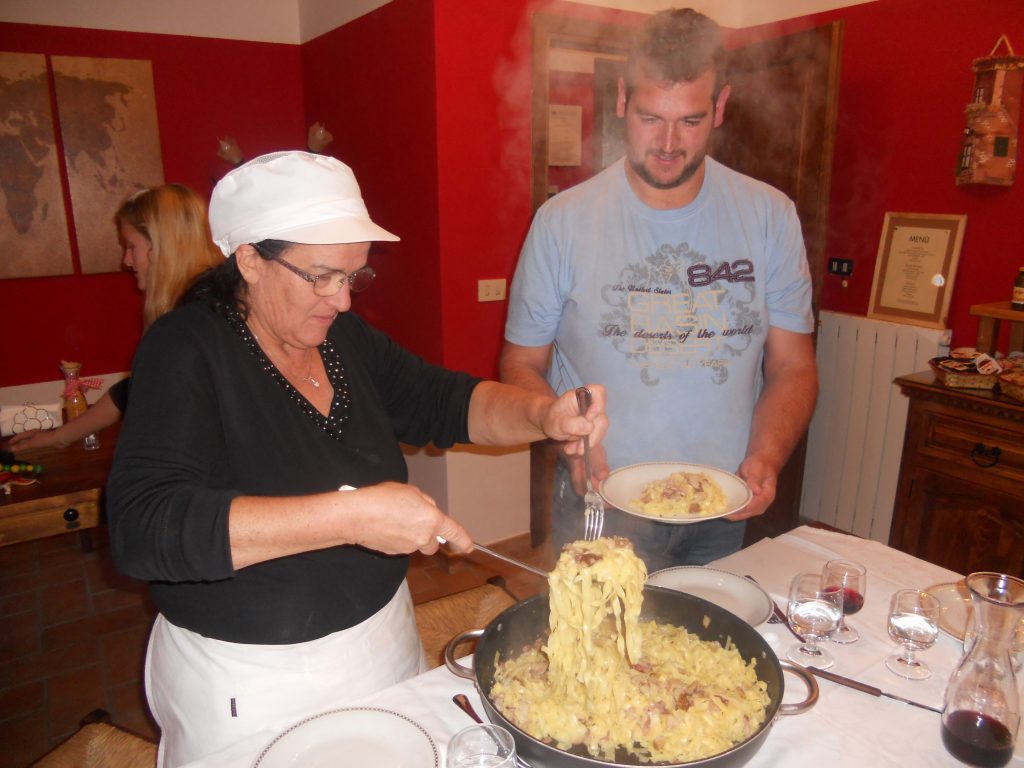
In Italy pasta is valued so highly that there is a solid gold replica of a piece of pasta, tagliatelle, in a glass case in Bologna specifying the correct dimensions –6 mm wide and only 1 mm thick. It is smaller than the pappardelle we’re going to make.
All Italian flours are graded by a law passed in 1967, and we start with the finest flour – Doppio Zero – guided by the expert hands of our friend who makes the pasta every day for her lucky family. She makes it look so easy. She spreads the flour evenly across the wooden table with a flourish. Cracks the eggs. Mixes it into a sticky, shiny mountain. And then she kneads it with the heels of her hands, pulling and stretching it before kneading it again. She rolls it with a huge wooden rolling pin nearly a metre long. Her arms are strong from the rolling, folding and rolling again. She flattens it until it is smooth ribbons, long and smooth.

It could become any type of pasta – linguine, tortellini, fettuccini, tagliatelle or pappardelle. We’re making pappardelle – or at least she is, and we volunteer my nephew Chris to do the rolling on our behalf. They make long flat ribbons about 2 cm wide. Pappare is an Italian verb meaning to gobble up. Pappardelle! And we do!


We don’t need our pasta to be precisely measured but it is perfect, especially when served with a ragu di cinghiale (wild boar sauce). Pasta making is an art, a skill, and is worth trying at home with the family. But we’re looking forward to watching it being made again on the big wooden table at the farm in Umbria, or fluffy gnocchi, made from the freshest new season’s potatoes, in the kitchen of our friend’s home in Vicenza.
Buon appetito.